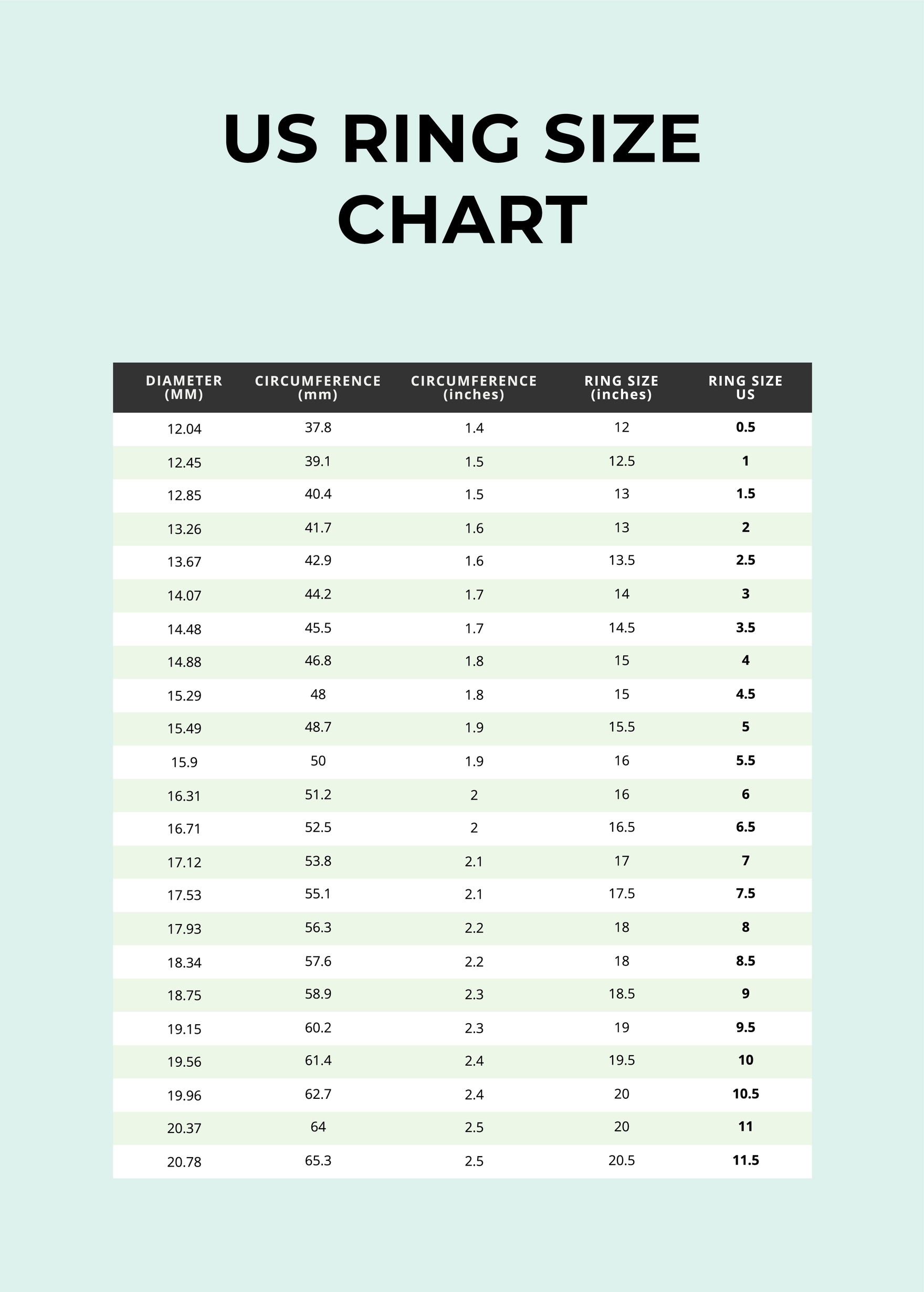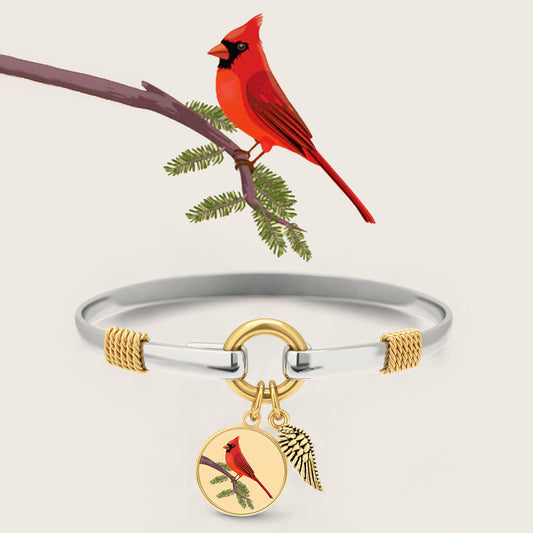Designing for Precision: The Importance of US Ring Size Charts in the Design Process
Share
In the realm of jewelry design, precision is paramount, and nowhere is this more evident than in the meticulous process of determining ring sizes. Ensuring that a ring fits perfectly is not just a matter of comfort; it is a cornerstone of customer satisfaction and brand reputation. The US ring size chart serves as an indispensable tool in this intricate design process, providing a standard measurement system that designers, jewelers, and customers can rely on. This article delves into the significance of the US ring size chart, its historical development, practical applications in design, and future trends in the industry.
 Source: Template.net
Source: Template.net
A Brief History of Ring Sizing
The concept of standardized ring sizing can be traced back to ancient civilizations, where different cultures employed their unique methods to measure and craft rings. However, it wasn't until the 19th century that a more systematic approach began to take shape. The US ring size chart, which is widely used today, was developed to simplify the process of ring fitting and ensure consistency across the industry. This chart categorizes ring sizes based on the circumference of the finger, providing a numerical scale that ranges from 1 to 13.5, including half and quarter sizes.
The establishment of a standardized sizing system revolutionized the jewelry industry, making it easier for designers to create rings that fit accurately and for customers to purchase rings with confidence. The US ring size chart's compatibility with international sizing systems further solidified its prominence, enabling seamless global transactions and enhancing the overall customer experience.
The Design Process: Precision and Practicality
Incorporating the US ring size chart into the design process involves several critical steps, each aimed at achieving the perfect fit. Here, we explore the key phases of this process and how the chart plays a vital role.
Understanding the Basics
The first step in the design process is understanding the basics of ring sizing. Designers must familiarize themselves with the US ring size chart and its equivalents in other regions. For instance, Solvar's Ring Size Guide emphasizes the importance of measuring the finger at the end of the day when it is at its largest (Solvar Ring Size Guide). This practice helps in obtaining an accurate measurement, which is crucial for designing rings that fit comfortably.
Measurement Techniques
Accurate measurement is the cornerstone of the design process. Designers often use various tools and methods to measure the finger, such as ring sizers, strips of paper, or string. The Jewellery Room's Size Guide suggests avoiding measurements when the fingers are cold, as this can lead to a smaller size (The Jewellery Room Size Guide). Instead, measurements should be taken at different times of the day to account for natural fluctuations in finger size.
Conversion and Customization
Given the global nature of the jewelry market, designers must be adept at converting ring sizes between different measurement systems. For instance, Radian Design's Ring Size Conversion Guide provides a detailed chart that converts sizes between the US, UK, European, and Japanese systems (Radian Design Ring Size Conversion). This knowledge allows designers to cater to an international clientele, offering bespoke creations that fit perfectly regardless of the customer's location.
Consideration of Ring Styles
Different ring styles can impact the sizing process. Wider bands, for example, may require a slightly larger size to ensure a comfortable fit. Rafael Jewelry's Ring Size Guide highlights the importance of considering the width of the ring band during the design process (Rafael Jewelry Ring Size Guide). This consideration ensures that the final product not only looks aesthetically pleasing but also feels comfortable on the wearer's finger.
 Source: Shopify.com
Source: Shopify.com
Case Study: Custom Jewelry Design for an International Client
To illustrate the practical application of the US ring size chart in the design process, let's examine a case study involving a custom jewelry design for an international client.
A renowned jewelry designer, Anna, received a commission from a client in the UK who wanted a bespoke engagement ring. The client provided her UK ring size, but Anna needed to convert it to the US size to ensure precision in her design. Utilizing H.K. Jewelry's UK to US Ring Size Conversion Chart (H.K. Jewelry UK to US Ring Size Conversion Chart), Anna accurately converted the size and began the design process.
Anna followed the guidelines from Brilliant Earth's Ring Size Guide, measuring the ring size at different times of the day to account for fluctuations (Brilliant Earth Ring Size Guide). She also considered the width of the ring band, as the design featured an intricate, wide band that would require a slightly larger size for comfort.
Throughout the process, Anna maintained constant communication with the client, sending progress updates and confirming measurements. The final product was a stunning engagement ring that fit perfectly, thanks to the meticulous application of the US ring size chart and international conversion tools.
Future Trends and Considerations
As technology continues to evolve, so too do the tools and methods used in the jewelry design process. One emerging trend is the use of digital sizing tools and 3D scanning technology, which offer greater precision and convenience. These advancements are likely to become more prevalent in the industry, further enhancing the accuracy of ring sizing and the overall customer experience.
Moreover, the increasing demand for personalized and custom jewelry is expected to drive innovations in sizing techniques. Designers may develop more sophisticated methods to capture unique finger measurements, ensuring that each piece of jewelry is tailored to the individual's specifications.
It is also essential to consider the environmental and ethical implications of jewelry design. Sustainable practices, such as using recycled materials and reducing waste, are becoming increasingly important to consumers. By incorporating these practices into the design process, jewelers can create beautiful, eco-friendly pieces that resonate with environmentally conscious customers.
Valuable Insights and Recommendations
Understanding the importance of accurate ring sizing cannot be overstated in the jewelry design process. The US ring size chart serves as a foundational tool that ensures precision and enhances the overall customer experience. By familiarizing themselves with sizing techniques, conversion methods, and the impact of different ring styles, designers can create stunning pieces that fit perfectly and comfortably.
For customers, it is advisable to measure their ring size at different times of the day and consider the width of the ring band when making a purchase. Utilizing reliable guides, such as those provided by Solvar, The Jewellery Room, and Rafael Jewelry, can help in obtaining accurate measurements and making informed decisions.
For designers, embracing new technologies and sustainable practices will not only improve the accuracy of ring sizing but also align with the growing demand for personalized and eco-friendly jewelry. By staying attuned to industry trends and continuously refining their techniques, jewelers can create timeless pieces that delight customers and stand the test of time.
For more on finding your perfect ring size, visit the US Ring Size Chart.
In conclusion, the US ring size chart is more than just a measurement tool; it is a critical component of the design process that ensures the creation of rings that are both beautiful and comfortable. By mastering the art of ring sizing and staying abreast of industry developments, designers can elevate their craft and deliver exceptional jewelry that meets the highest standards of precision and quality.




